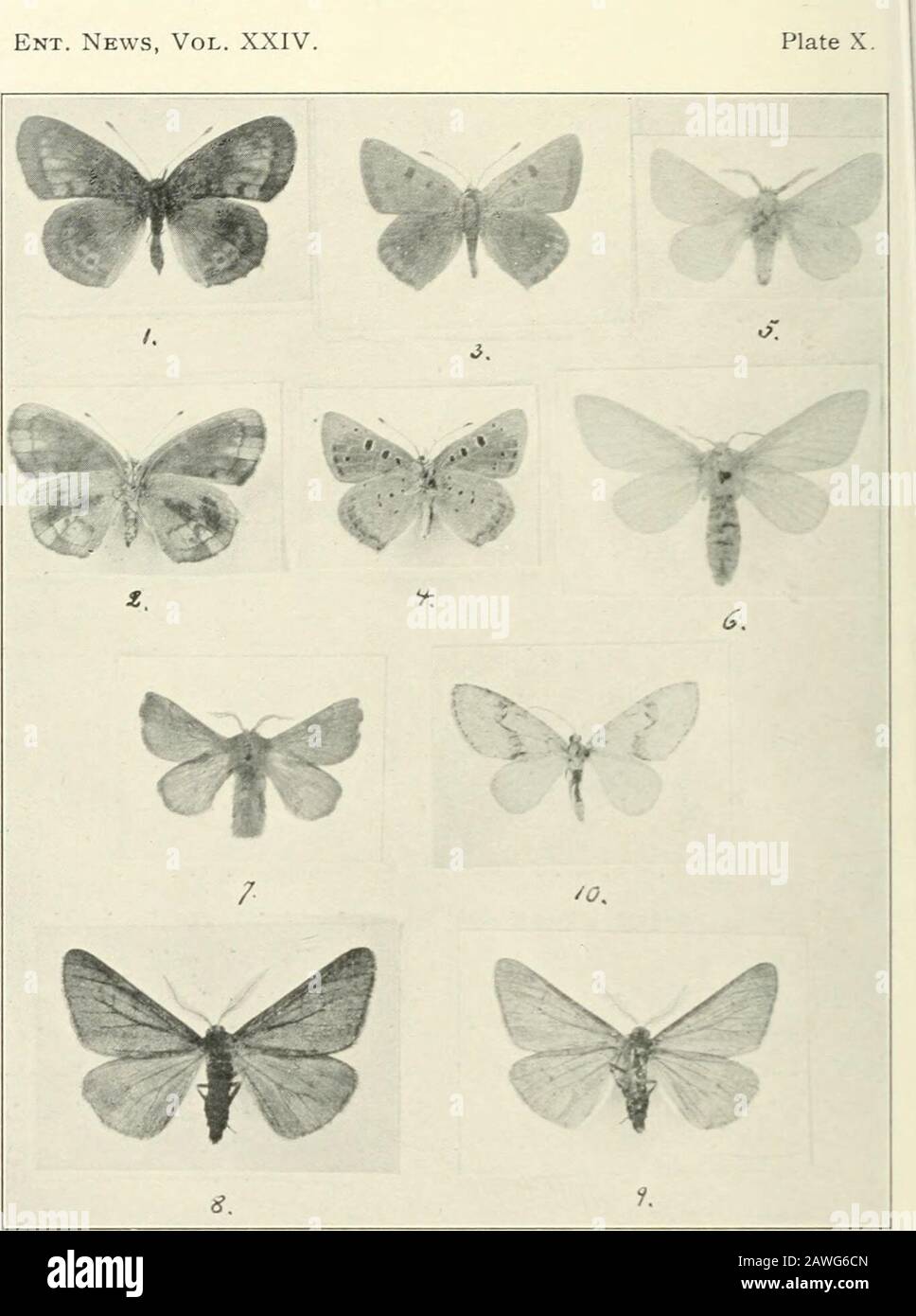Entomological news . tely retracted and it was evident that they hadjust emerged. The colors were bright and the wings perfectand not frayed in any way, and there was no sign of dust, dirtor decay on them. All in all it was quite evident that theyhad recently emerged. Both sexes were represented. Untildisproved, I will answer the question at the head of this ar-tice as follows: House-flies pass the winter in the pupal stageand in no other way. Charts of Food Plants of Lepidoptera. Miss Ximcna McGlashan. from her Ruttertl)- Farm at Truckee, Cali-fornia, has sent out several lists of food-plants

Image details
Contributor:
The Reading Room / Alamy Stock PhotoImage ID:
2AWG6CNFile size:
7.2 MB (207.7 KB Compressed download)Releases:
Model - no | Property - noDo I need a release?Dimensions:
1365 x 1832 px | 23.1 x 31 cm | 9.1 x 12.2 inches | 150dpiMore information:
This image is a public domain image, which means either that copyright has expired in the image or the copyright holder has waived their copyright. Alamy charges you a fee for access to the high resolution copy of the image.
This image could have imperfections as it’s either historical or reportage.
Entomological news . tely retracted and it was evident that they hadjust emerged. The colors were bright and the wings perfectand not frayed in any way, and there was no sign of dust, dirtor decay on them. All in all it was quite evident that theyhad recently emerged. Both sexes were represented. Untildisproved, I will answer the question at the head of this ar-tice as follows: House-flies pass the winter in the pupal stageand in no other way. Charts of Food Plants of Lepidoptera. Miss Ximcna McGlashan. from her Ruttertl)- Farm at Truckee, Cali-fornia, has sent out several lists of food-plants of North AmericanButterflies and Moths, dated January, March, April and May. 1913. re-spectively. As summaries of information they are very useful, but ithas been suggested that the size, especially of the larger charts. isinconvenient and cumbersome and that ordinary book or pamphletform would be more agreeable. Miss McGlashan asks the aid of allinterested in the compilation of a complete list. Ent. News, Vol. XXIV. NEW LEPIDOPTERA FROM MASSACHUSETTS-REiFF. Vol. xxiv] ENTOMOLOGICAL NEWS 3O5 Some new forms of Lepidoptera from Massachusetts. By William Reiff, Forest Hills Sta., Boston, Mass. (Plate X.) The season of 1912 yielded a number of atypical lepidop-terous forms, six of which are described in the present paper. Phyciodes tharos Dru. f. nov. reaghi (Figs. 1 and 2). One 9 derived from summer form morpheus Fab. Upper surfaceof fore wings much blackened in basal and median spaces, with lightspots obsolete in marginal band. The latter very broad and black, thiscolor extending over upon the costa for about one-half its length.Black markings near apex of primaries represented by a few blackscales only. Black median line replaced by a broad, dull black, in-definite shading. The hind wings, on upper surface, have all markingsin basal space obsolete. There is a black powdering in an indefinite, broad line at the base of these wings, parallel with the inner margin.Marginal band of